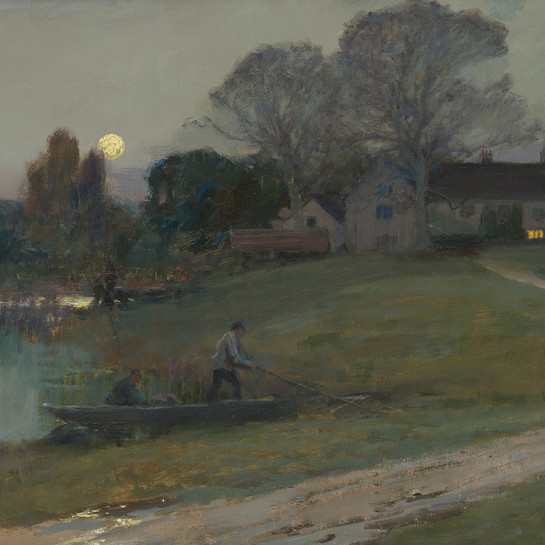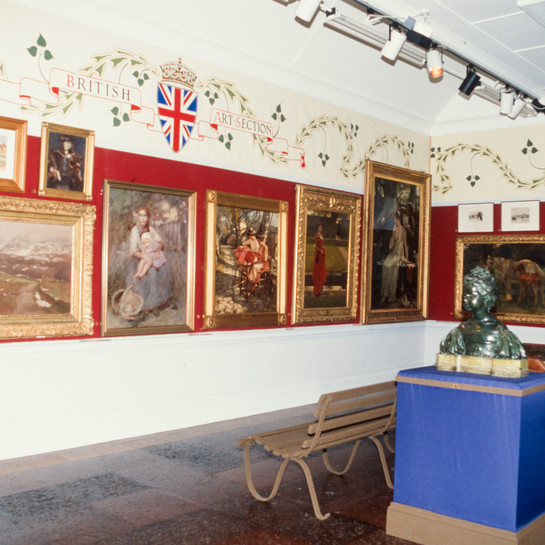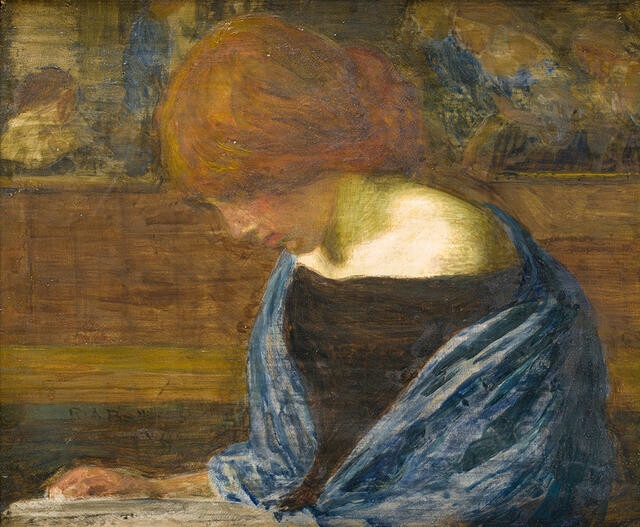Robert Anning Bell
British, b.1863, d.1933
The Romance
- c. 1901
- Tempera on wood panel
- Presented by the family of James Jamieson 1932
- 400 x 445 x 25mm
- 69/468
Tags: books, interior, people (agents), portraits, profiles (figures), reading, shawls, women (female humans)
Christchurch builder and arts supporter James Jamieson probably bought Robert Anning Bell’s The Romance while on a business trip to England in 1901, sourcing machinery to build the Roman Catholic Cathedral. When lent to a Canterbury Society of Arts exhibition of privately owned works in 1909, it was described as “a very fine piece of work, rich in colour and interesting as the only example present of tempera painting”. Born and trained in London, Bell became part of a revival in the egg-yolk based technique that was first reintroduced by the Pre-Raphaelites and gained new impetus in 1901 with the formation of the Society of Painters in Tempera, to which he belonged. Bell was a versatile artist who embodied Arts and Crafts ideals as a painter, illustrator and designer, and as an influential teacher in design at Liverpool University, Glasgow School of Art and London’s Royal College of Art. His architectural commissions included many stained glass windows, plus mosaics for the Houses of Parliament and Westminster Cathedral.
(The Moon and the Manor House, 12 November 2021 – 1 May 2022)
Exhibition History
Robert Bell has given this small figure study a title which suggests the type of book the young woman is reading. Certainly she appears to be completely caught up in the story. Bell was an important figure in the development of the Art Nouveau style in the British Arts and Crafts Movement. He worked with a wide variety of mediums throughout his career, including oil, watercolour, tempera, stained glass and mosaics. In the 1890s he also produced numerous book and periodical illustrations, included in such publications as the Yellow Book and The Studio. Born in London, Bell left school at fourteen due to family financial difficulties and became articled to an architect. He later studied art at the Westminster School of Art, the Royal Academy Schools and the studio of Aimé Morot, in Paris. Bell held professorships at University College in Liverpool, Glasgow School of Art and the Royal College of Art and was elected Master of the Art Workers Guild in 1921. (Label date unknown)
A versatile artist who worked in oils, tempera and watercolour, Bell has given this small figure study a title which probably suggests the type of literature that has captured the attention of the young woman. Painted with a succession of very thinly applied oil glazes over a white background, it may be an oil study for a later work. The thin paint gives the colours and particularly the girl's white shoulders, a special luminosity. In the background the indistinct forms are also rather ambiguous and may be paintings on the wall or a landscape seen over a balcony, all adding to the mystery and 'romance' of this piece.
(Label date unknown)



